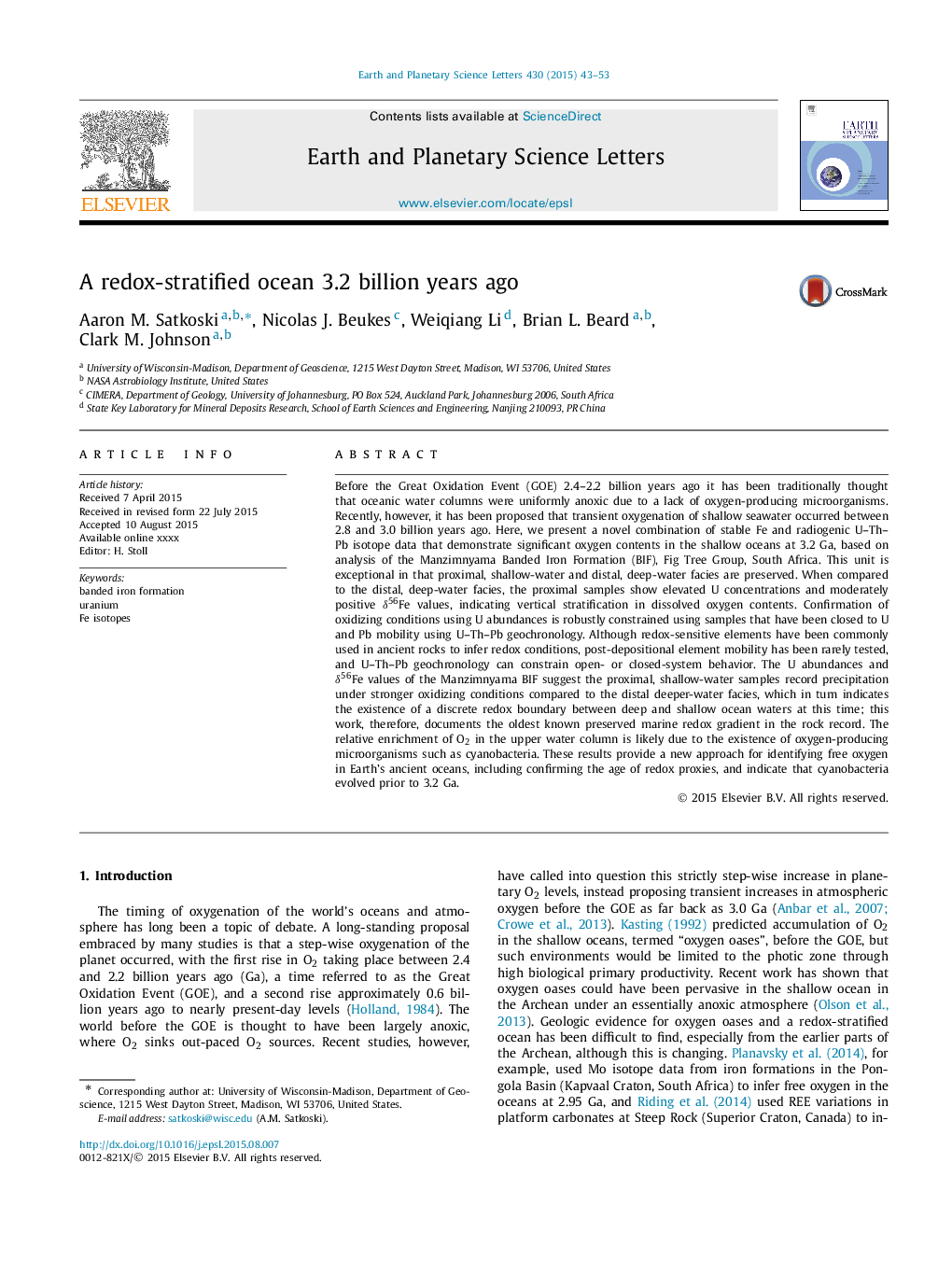| Article ID | Journal | Published Year | Pages | File Type |
|---|---|---|---|---|
| 6427906 | Earth and Planetary Science Letters | 2015 | 11 Pages |
Abstract
Before the Great Oxidation Event (GOE) 2.4-2.2 billion years ago it has been traditionally thought that oceanic water columns were uniformly anoxic due to a lack of oxygen-producing microorganisms. Recently, however, it has been proposed that transient oxygenation of shallow seawater occurred between 2.8 and 3.0 billion years ago. Here, we present a novel combination of stable Fe and radiogenic U-Th-Pb isotope data that demonstrate significant oxygen contents in the shallow oceans at 3.2 Ga, based on analysis of the Manzimnyama Banded Iron Formation (BIF), Fig Tree Group, South Africa. This unit is exceptional in that proximal, shallow-water and distal, deep-water facies are preserved. When compared to the distal, deep-water facies, the proximal samples show elevated U concentrations and moderately positive δ56Fe values, indicating vertical stratification in dissolved oxygen contents. Confirmation of oxidizing conditions using U abundances is robustly constrained using samples that have been closed to U and Pb mobility using U-Th-Pb geochronology. Although redox-sensitive elements have been commonly used in ancient rocks to infer redox conditions, post-depositional element mobility has been rarely tested, and U-Th-Pb geochronology can constrain open- or closed-system behavior. The U abundances and δ56Fe values of the Manzimnyama BIF suggest the proximal, shallow-water samples record precipitation under stronger oxidizing conditions compared to the distal deeper-water facies, which in turn indicates the existence of a discrete redox boundary between deep and shallow ocean waters at this time; this work, therefore, documents the oldest known preserved marine redox gradient in the rock record. The relative enrichment of O2 in the upper water column is likely due to the existence of oxygen-producing microorganisms such as cyanobacteria. These results provide a new approach for identifying free oxygen in Earth's ancient oceans, including confirming the age of redox proxies, and indicate that cyanobacteria evolved prior to 3.2 Ga.
Related Topics
Physical Sciences and Engineering
Earth and Planetary Sciences
Earth and Planetary Sciences (General)
Authors
Aaron M. Satkoski, Nicolas J. Beukes, Weiqiang Li, Brian L. Beard, Clark M. Johnson,
